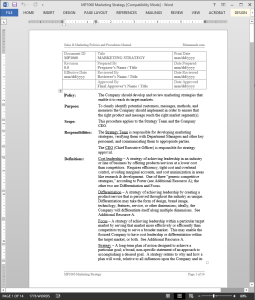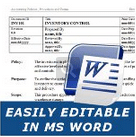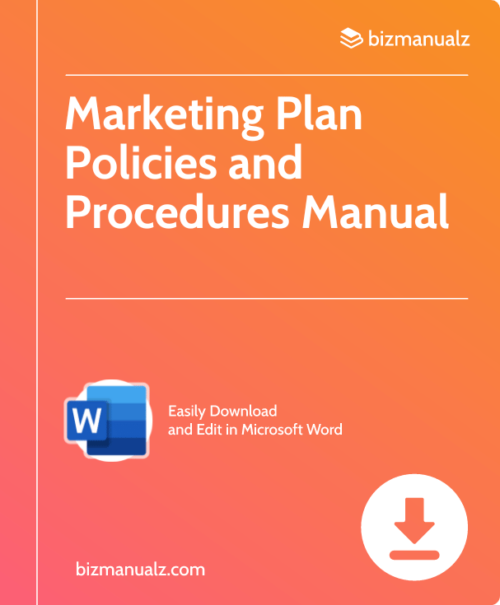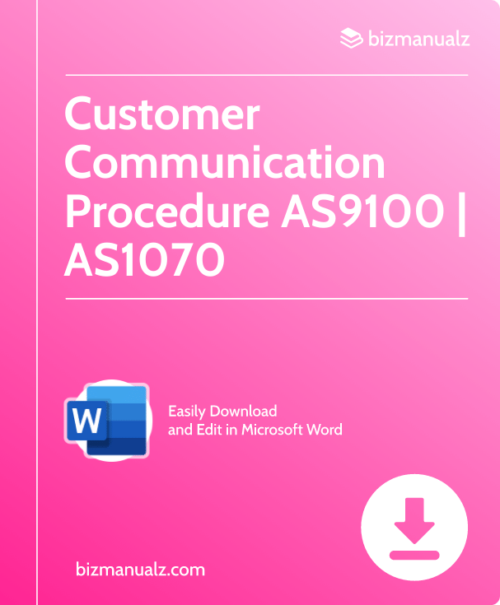Marketing Strategy Procedure Template Word
The Marketing Strategy Procedure Template Word is a comprehensive guide that helps businesses develop effective marketing strategies. This template is designed to provide a step-by-step process for creating a marketing plan that aligns with your business goals and objectives.
The Marketing Strategy Procedure Template Word includes a range of tools and resources to help you develop a successful marketing strategy. It provides guidance on how to conduct market research, identify target audiences, and develop a marketing mix that includes product, price, promotion, and place.
The template also includes a range of templates and worksheets that can be customized to suit your specific needs. These include a SWOT analysis template, a marketing budget template, and a marketing plan template.
Using the Marketing Strategy Procedure Template Word can help businesses to:
- Develop a clear understanding of their target audience
- Create a marketing plan that aligns with their business goals and objectives
- Identify the most effective marketing channels for reaching their target audience
- Develop a marketing mix that maximizes the impact of their marketing efforts
- Track and measure the success of their marketing campaigns
Overall, the Marketing Strategy Procedure Template Word is an essential tool for any business looking to develop a successful marketing strategy. It provides a clear and structured approach to marketing planning, helping businesses to achieve their marketing goals and objectives.
Marketing Strategy Procedure
The purpose of the Marketing Strategy Procedure is to identify potential customers, messages, methods and ensures that the right product and message reach the right market segment.
The Marketing Strategy Procedure applies to the strategy team and the President/CEO. (14 pages, 1722 words)
Marketing Strategy Responsibilities:
The Strategy Team is responsible for developing marketing strategies, verifying them with Department Managers and other key personnel, and communicating them to appropriate parties.
The CEO (Chief Executive Officer) is responsible for strategy approval.
Marketing Strategy Definitions:
Cost leadership– A strategy of achieving leadership in an industry or line of business by offering products/services at a lower cost than competitors. Requires efficiency, tight cost and overhead control, avoiding marginal accounts, and cost minimization in areas like research & development. One of three “generic competitive strategies”, according to Porter; the other two are Differentiation and Focus.
Differentiation – A strategy of achieving leadership by creating a product/service that is perceived throughout the industry as unique. Differentiation may take the form of design, brand image, technology, features, service, or other dimensions; ideally, the company will differentiate itself along multiple dimensions.
Focus – A strategy of achieving leadership within a particular target market by serving that market more effectively or efficiently than competitors trying to serve a broader market. This may enable the focused company to have cost leadership or differentiation within the target market, or both.
Strategy – A long-term plan of action designed to achieve a particular goal; a broad, non-specific statement of an approach to accomplishing a desired goal. A strategy relates to why and how a plan will work, relative to all influences upon the company and its activities (in particular, its customers and competitors).
 Marketing Strategy Procedure Activities
Marketing Strategy Procedure Activities
- Marketing Strategy-Introduction
- Developing Marketing Strategy
- Finalizing Marketing Strategies
- Marketing Strategy Review
Marketing Strategy Procedure Forms
The goal of strategy is to describe how and why the company is going to achieve its goals and objectives AND to that end, the company must ensure that its strategies are aligned. Marketing strategies should identify customer groups the company can serve better than its competitors and tailor its product offerings, prices, distribution, promotional efforts, and services to those target market segments. Good marketing strategies helps the company concentrate its efforts on the markets it can serve best.
It is crucial that the company’s strategy takes into account all aspects/functions of the company, so that the whole organization proceeds in the same direction with the same purpose. The company’s strategy is more likely to yield positive results if all employees, contractors, etc., understand and agree with them.
Strategy is the result of relevant research and analysis, as appropriate; and synthesizing the parts into a cohesive unit to develop the Marketing Plan. But actions taken alone are just tactics. In order for your business to survive and grow your Marketing Strategy Plan must be competitive.
Competitive Strategy
Creating strategic growth is based on a strong foundation that is competitive. Michael Porter outlines three “generic competitive strategies” in his book Competitive Strategy: Techniques for Analyzing Industries and Competitors: cost leadership, differentiation and focus.
COST LEADERSHIP STRATEGY
A strategy of achieving leadership in an industry or line of business by offering products or services at a lower cost than your competitors. A Cost Leadership Strategy requires a focus on efficiency, tight cost and overhead internal controls, and cost minimization in areas like research & development. In other words it requires a system of policies and procedures. Your Policies and Procedures Strategy provides the basis for a sound cost leadership strategy.
DIFFERENTIATION STRATEGY
A strategy of achieving leadership by creating a product/service that is perceived throughout the industry as unique. A differentiation strategy may take the form of design, brand image, technology, features, service, or other dimensions; ideally, the Company will differentiate itself along multiple dimensions. A focus on quality could be a key differentiator. Getting Quality awards help strategy differentiation.
FOCUS STRATEGY
A strategy of achieving leadership within a particular target market by serving that market more effectively or efficiently than competitors trying to serve a broader market is a focus strategy. This may enable the focused Strategy company to have cost leadership or differentiation within a tightly focused target market, or both.






















Reviews
There are no reviews yet.